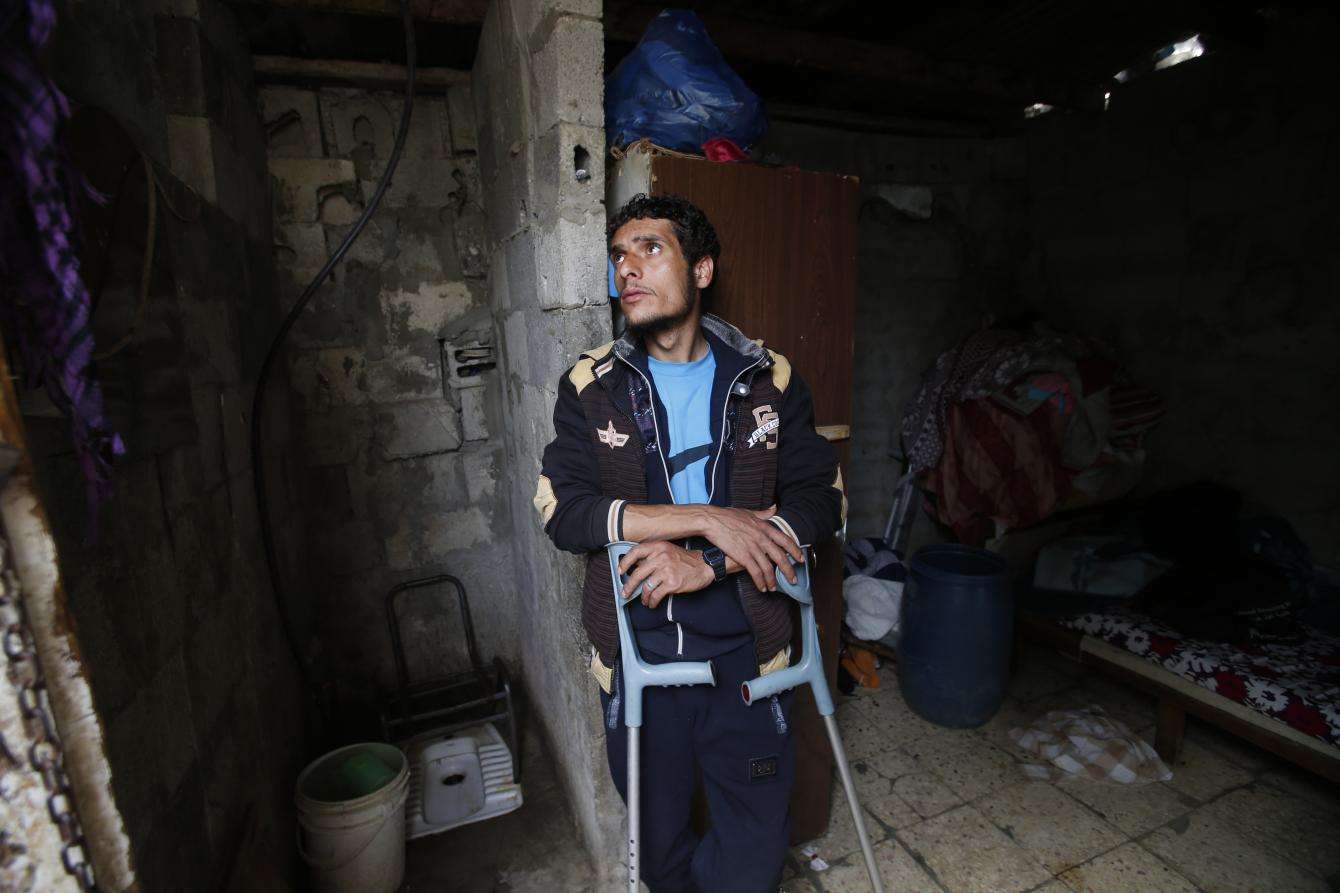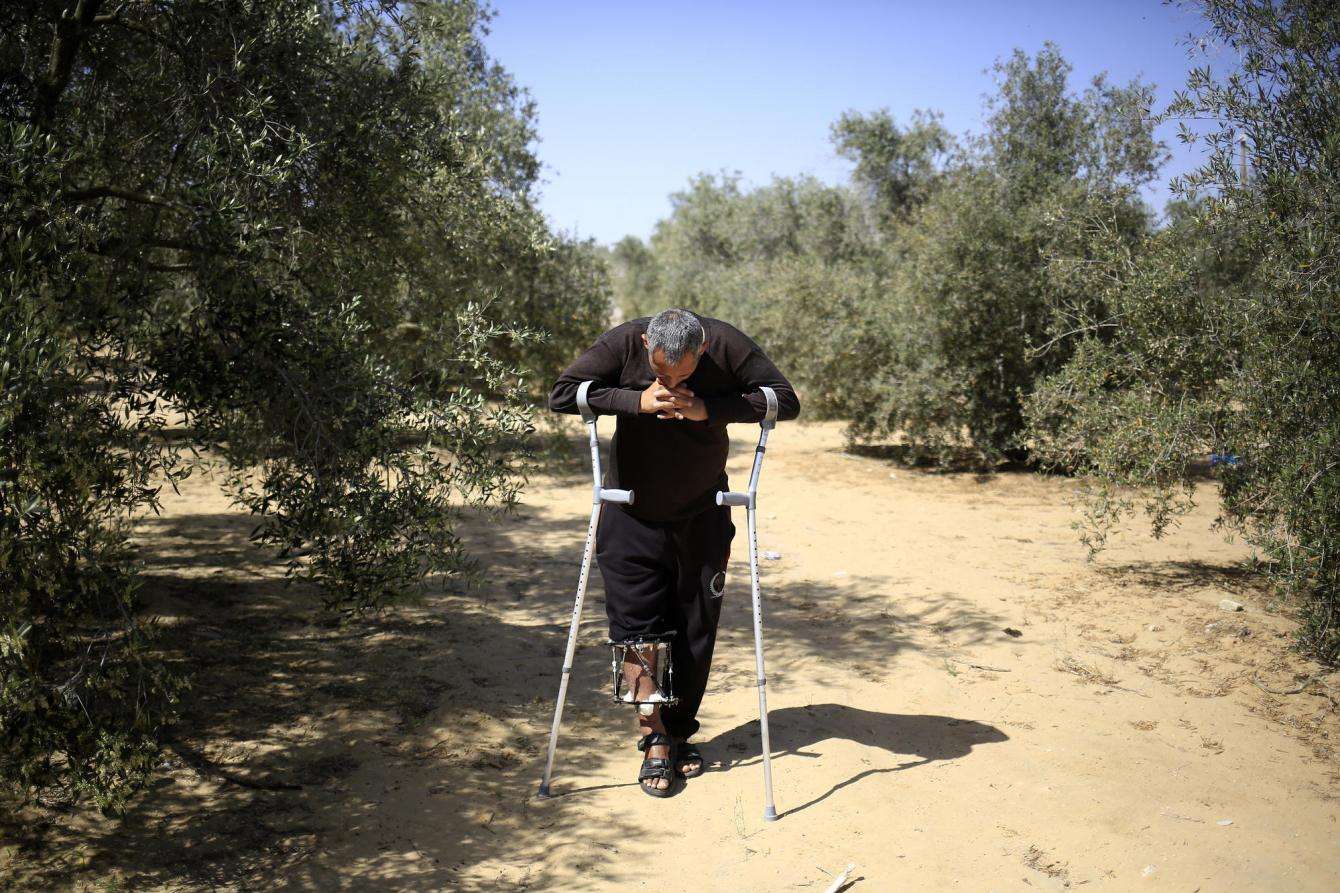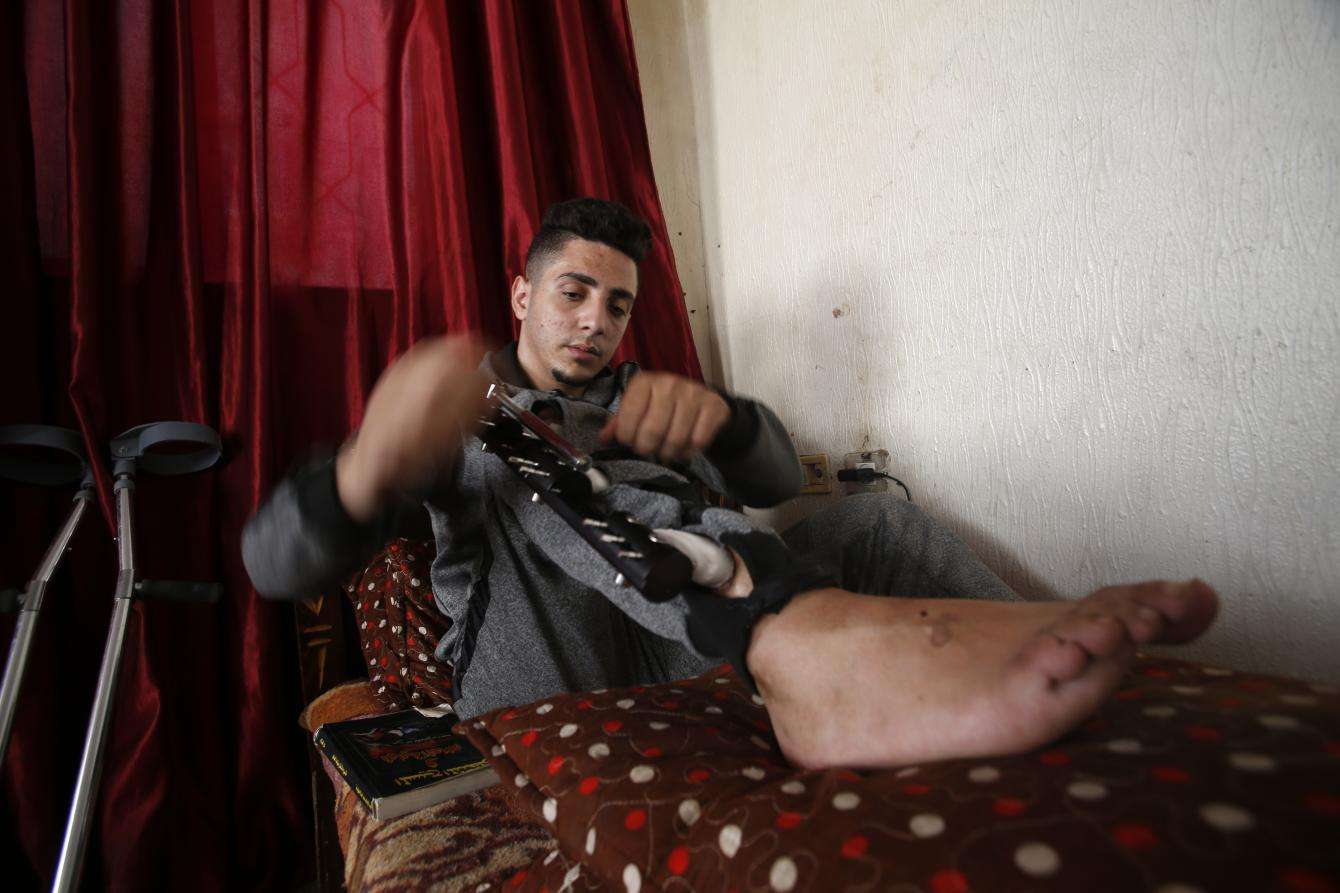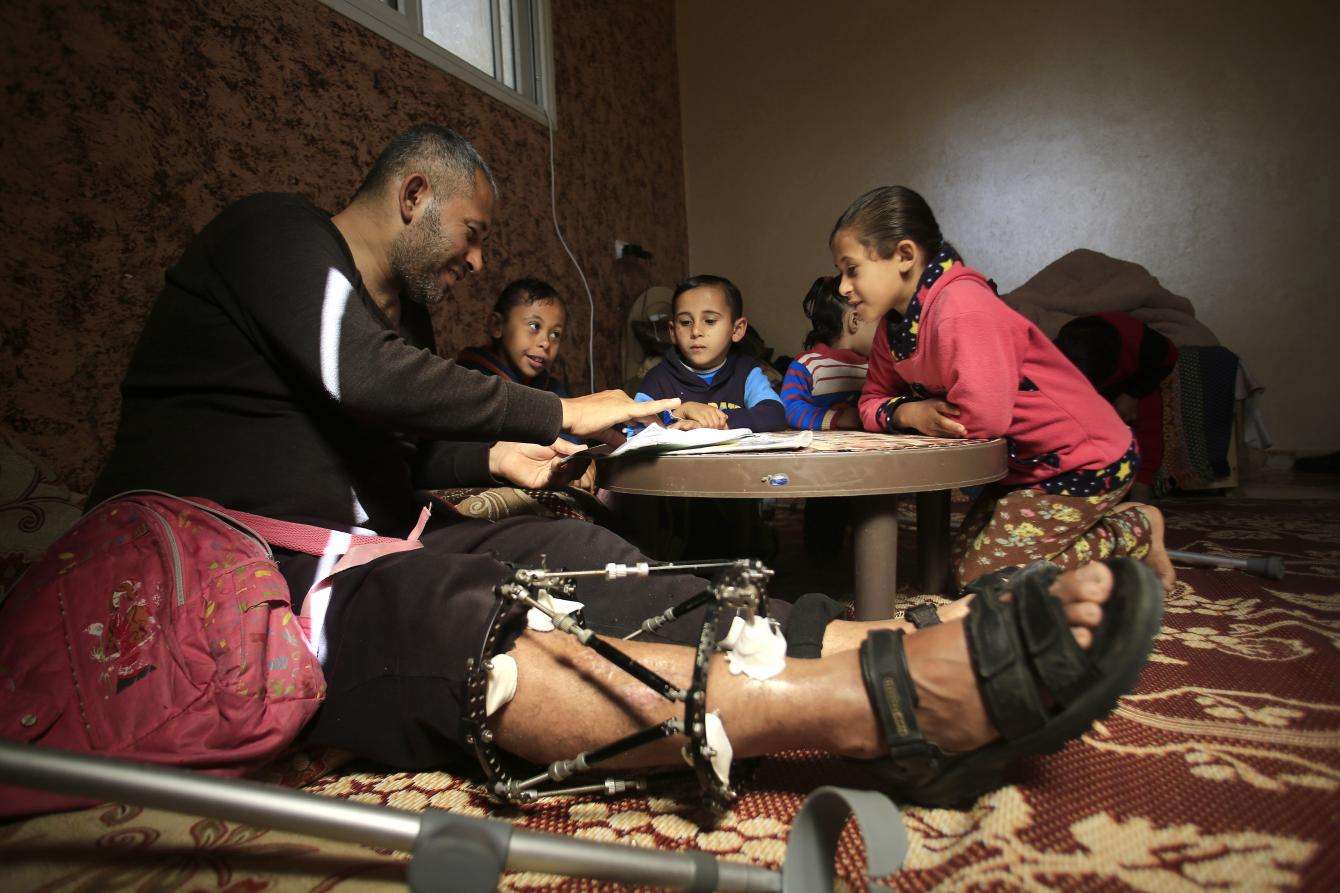On May 14, 2018, more than 1,300 Palestinian protestors were shot by the Israeli army on the bloodiest day of the March of Return demonstrations near the border fence between Gaza and Israel. Sixty people were killed. A year later, many of the wounded are still struggling with the devastating consequences of their injuries. Gaza’s health system is unable to provide the necessary care to these patients, many of whom will need complex surgeries and extensive rehabilitation if they ever hope to return to their normal lives.
In a Doctors Without Borders/Médecins Sans Frontières (MSF) clinic in Gaza, 26-year-old Murad struggles to describe the sensations in his wounded leg to his doctor. Since he was shot, his leg is racked by shooting pains that hit like electric shocks. “The injury has destroyed me,” he says. “I was going out to work before, repairing satellite dishes, but now I can’t, and no one has reached out to help me.”

“We are oppressed”
“I went [to the demonstrations] peacefully, as a citizen,” says Ahmed, 38, who was also shot in the leg. “I’m from Bir al-Saba [Beersheva] originally. Since 2000 there have been three wars, all of Gaza under fire, 13 years of the blockade, two separate states in the West Bank and Gaza. We are oppressed.”

A farmer, Ahmed delights in describing the animals he looked after, the plants he grew, the yogurt and cheese he made—all impossible now, with a leg still missing about an inch of bone even after multiple operations. “I just want to sleep, to take medication, that’s all I can do.”
Hard times and fading hope
Gaza’s economy has been brought to the brink of collapse by the Israeli blockade, Palestinian political infighting, and Egyptian restrictions on movement. People living here have watched as their means of making a living have disappeared. The gunshot wounds suffered by thousands of people—more than 7,000 have been injured by bullets fired by the Israeli army since March 30, 2018—have only made things worse.

“Since my injury I just sit at home,” says Murad. “I live with my mother—my father left her—and we get no help from our family.” He begins to cry as he describes how they have not been able to afford gas for their one-room house for a month and how they have had to go into debt to buy biscuits and bread. “You see who your friends are in hard times,” he says. “Now I see have none.”
With the Ministry of Health and organizations like MSF stretched to their limits, many patients like Murad are left waiting for solutions that might not come. “To treat people injured in the protests we have had to open two hospital wards, increase the number of clinics we run to five, and add to our surgical capacity,” says MSF head of mission Marie-Elisabeth Ingres. “However, even with all we are doing, we simply lack the number of beds and expert surgeons and antibiotic specialists needed to properly treat these injuries.”
“All my thoughts have become about my injury”
Twenty-three-year-old Iyad, a musician, is one of a lucky few who have managed to travel out of Gaza to receive treatment for his gunshot wound. At MSF’s hospital in Amman, Jordan, which specializes in reconstructive surgery for war-wounded people from across the Middle East, he underwent orthopedic surgery and treatment for a bone infection that required four weeks of antibiotics in an isolation room.

Still, uncertainty lingers. “All my thoughts have become about my injury,” he says. “When will I be able to walk? Will I be able to walk again?” He’ll need another round of operations in Amman six months from now and a long period of rehabilitation before he will know for sure.
A heavy burden
The burden of caring for the injured—who are overwhelmingly men—has fallen mostly on wives and mothers. “My wife is tired too,” says Ahmed, the farmer. “She keeps asking when I will be better. She wants to live a normal life—of course, she’s human. She said she wants to go back to her family, but I need her for so many things.” He describes the frustration of being unable to put on pants, to go shopping, to lift up his children for fear of the pain.

Despite the immense challenges, Murad is trying maintain his spirits. “I know that my leg might be amputated, but despite that I continue to try to get it treated,” he says. “I refused to travel at first, but now I hope to.” His ambition for when he recovers is to open a tea and coffee stand.
But as the months drag on, it’s hard to remain positive. “I wish that my leg had been cut off,” says Ahmed, “so that at least now I wouldn’t have any pain.” A year after he was shot, no one can tell him when that pain might end.




